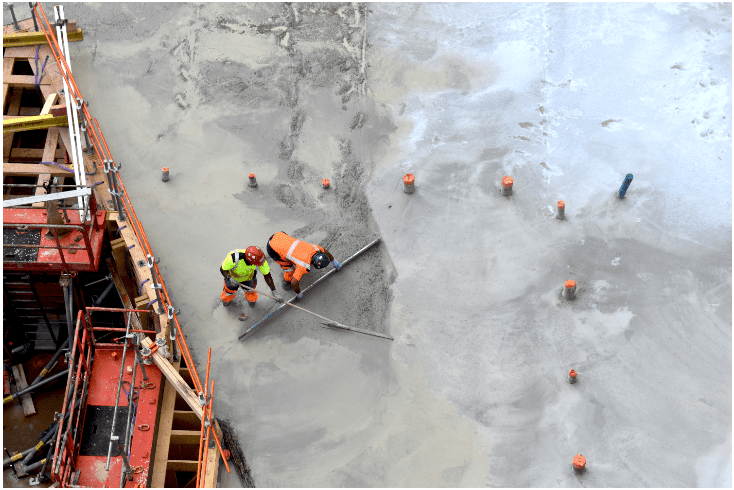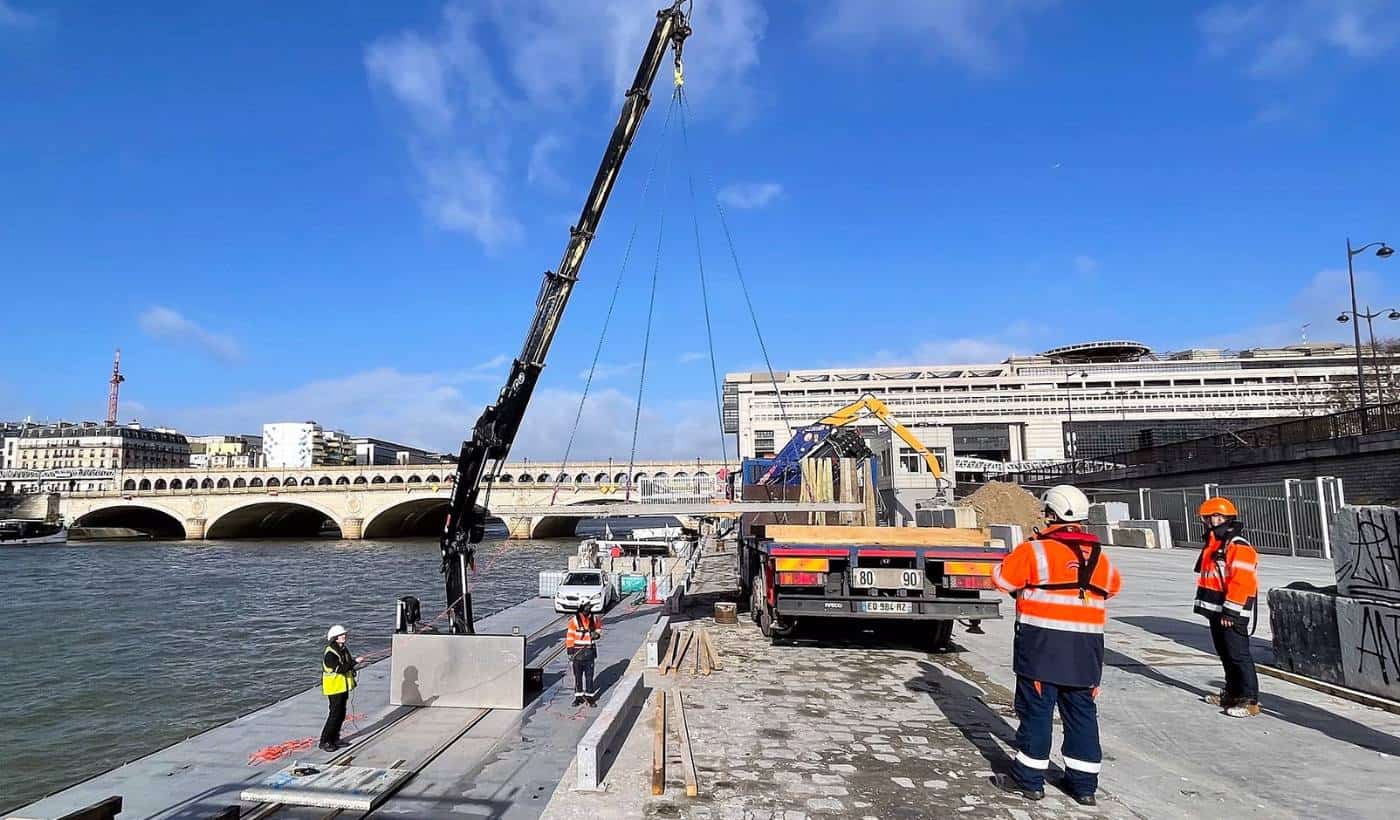
The latest developments in low-carbon concrete
3 minutes of reading
The first part of the 6th assessment report of the IPCC, published in August 2021, made blatantly clear how important it is for us to meet the commitments made under the Paris Agreement by limiting global warming to less than 2°C, preferably to 1.5°C, and to achieve carbon neutrality by 2050. The construction sector, one of the main emitters of greenhouse gases, is particularly concerned. It accounts for 19% of emissions in France (not including associated emissions such as electricity and heat production).
At the heart of the sector’s low-carbon transition, the diversification and decarbonisation of building materials is an important lever: this covers the structuring of bio-sourced and geo-sourced materials, the development of solutions from the “dry sector” (reuse, prefabrication), and the emergence of new ranges of low-carbon concrete. The challenge is to be able to use the right material in the right place, according to the specific context of a given territory and a particular project. We turn the spotlight on low-carbon concrete: what processes and techniques does this term suggest and what does it promise?

Traditional concrete is responsible for 7% of greenhouse gas emissions worldwide. This is due to the sheer volume of concrete produced: 6 billion cubic meters of concrete are poured every year (including 50 million in France), making it the material most consumed by humans after water, but before food! Beyond the quantities, this carbon footprint is also explained by the composition of concrete and the manufacturing processes.
Cement concrete is a mixture of aggregates, including sand, water and cement, used as a binder. While cement only accounts for about 13% of the overall composition, it contributes most of the carbon impact of concrete. Cement is composed of clinker, a mixture of limestone and clay that is calcined at very high temperatures in kilns and then ground. It is the clinker that gives cement its ability to harden by mixing with water and then binding the aggregates, two essential steps in making concrete. But clinker production is also the most highly polluting part of the process. 40% of the greenhouse gas emissions from clinker are attributable to the industrial process and firing, while the remaining 60% relate to the chemistry: burning limestone releases CO2.
Reducing both the volumes consumed and the carbon footprint of cement
Two levers can therefore be applied to reduce the carbon footprint of concrete. The first of these involves reducing volumes: the least polluting concrete is that which is not produced. The aim is to avoid the systematic use of the material and to develop alternatives where concrete is not essential for either structural or regulatory reasons. Timber construction, for which the market is becoming more structured, is thus experiencing significant growth. According to a national survey of timber construction in 2021, wood is gaining ground in all segments of construction (houses, apartment blocks, offices, agriculture, industry, and craft trades). The second lever relates to reducing the carbon footprint of concrete, and thus that of cement, and more specifically that of clinker. Research is focused on altering the chemistry of concrete to avoid using clinker. Some cold-activated clay-based cements can reduce greenhouse gas emissions by around 75% compared to traditional cement. The components are obtained at lower firing temperatures than clinker and they release water rather than CO2 during the firing process.Experimenting with clay cements
Experts in Cementitious Materials at Bouygues Construction (part of the Materials Engineering unit) are conducting experiments with a number of technologies from Hoffmann Green Cement, a specialist in low-carbon cement. The two companies signed a collaboration contract in July 2019 to develop and test concrete mixes using a cement made from calcined clays. The associated technology is designed to reduce the carbon footprint by 70 to 80%. A further advantage of using calcined clays is their large and well-balanced potential availability worldwide. Current research is focused on trying to increase the quantities of calcined clays used in concrete by increasing the proportions. A project is underway with Aéroports de Paris for the construction of a footbridge with an increased proportion of metakaolin, a calcined clay, in the mix compared to standard concrete.Plant-based concretes for filling and thermal insulation
Among other solutions, there are plant-based concretes that use bio-sourced materials. The aggregate for hemp concrete or hempcrete, for instance, is shives, obtained by processing the hemp stalk. This has the advantage of limiting the need for sand, a scarce resource which entails high environmental costs. In addition, hempcrete entails lower kiln temperatures than traditional concrete (800° C to 1,000° C instead of 1,500° C for traditional cement). However, this technology cannot be used for structural elements because hempcrete is not load-bearing. It is used as a framing material. For the construction sector to reduce its emissions, it must therefore move from the massive and recurrent use of a single material, cement concrete, to an approach based on a “materials mix” that takes account of the carbon footprint, the constraints linked to a project, the capacities offered by alternative solutions and local resources. There’s work to be done, so let’s get on with it!Most read
More reading
Read also


What lies ahead? 7 megatrends and their influence on construction, real estate and urban development
Article
20 minutes of reading

Energy
in partnership with


‘Paris at 50°C’: a fact-finding mission to prepare Paris for future heatwaves
Article
2 minutes of reading

What if your sites were supplied via rivers instead of roads?
Article
3 minutes of reading

